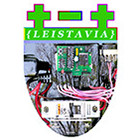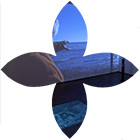Making history
|
The project


Making history is a live project occurring in real time that engages with nations in a responsive way. The aim of the ISEA 2009 project was to celebrate Ireland by incorporating a moment of Irish history into the history of the district of Leistavia. Initially the project was conceived as reflecting Ireland in its contemporary historical phase. It was considered that the project would celebrate the 'post-conflict' period. However it was apparent that tensions still flare in this contentious territory.
Consequently the project took on a political dimension in so far as it functioned to endorse the peaceful side of Irish history, celebrating specifically moments in Irish history where the barriers between peoples came down or Ireland stood unified. The audience was asked to select one of four dates, summarised below. The project installation was exhibited at Golden Thread Gallery, Belfast. Voting opened on 7 August 2009 and closed at 1pm on 29 August Belfast time. The most voted for date was announced at Golden Thread Gallery at 6.15pm on the 29th. 10 August 1976, the date of the origin of the Peace People movement was selected by both Irish and international voters.
1 November 190BCE
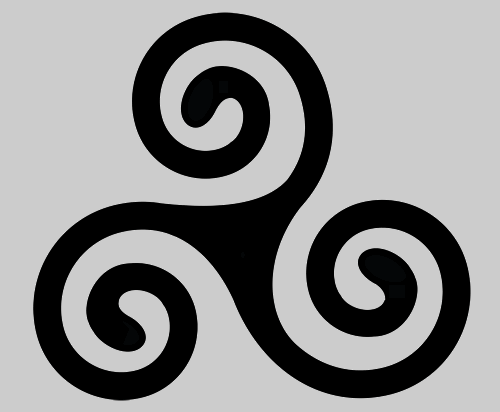
A significant festival in Celtic times, Samhain (Gaelic "samhraidhreadh" which means "summer's end") occured at the midpoint between Autumn Equinox and Winter Solstice. The last harvest is celebrated along with the cycle of life, and spirits passed.
Samhain (sow-een or sow'-inn) involved a great gathering of tribes on Tara Hill, which 'was the island's political and spiritual capital' from Celtic times to 1169. Tara Hill has ancient monuments, tombs and passages some of which are thought to date back to 3,500BCE (source: wikipedia). The Samhain festival marked the beginning of the dark half of the year, the exact opposite day of Beltrane. The last harvest is celebrated along with the cycle of life, and spirits passed. This festival has become Halloween.
The festival was a preparation to survive the winter, where confronting the possibility of death was paramount. Ceremonies involve fire, lights, setting out food and gifts for passing spirits. All fires are extinguished and relit from the sacred bonfire. The veil between the world (Shield of Skathach) is thin, allowing spirits to cross over. As such the living and the dead are united. This day was celebrated as Celtic New Year's Eve.
Source: Packrat-pro
While 1 November is a speculative date, the exact date in that year would have been probably decided by the alignment of the sun with markers at the site. Traditional dates range from 31 October to 1 November, with the actual astrological date in 2008 being 6 November.
Celtic culture was found throughout Europe with the La Tene period exemplifying a period of Celtic design and manufacture. For the La Tène period, historian Paul Jacobsthal devised four main groups under which Celtic art could be classified: the Early Style, the Waldalgesheim Style, the Plastic Style, and the Sword Style (source: the Celtic Place). The year 190BCE is cited by several sources as being the point at which the La Tene culture (as exemplified by Sword Style which is dated to 190BCE) is thought to have been present in Ireland. Significantly, expressions of Celtic culture persist to contemporary times, representing an extraordinary lineage in the European region particualrly in Ireland.
This lineage also reveals a truth of all cultures: that at certain points along any cultural line into the past, there are significant intersections with other cultures - La Tene Celtic culture is named after the site of the same name in Switzerland and developed in eastern France, Switzerland, Austria, southwest Germany, the Czech Republic, Slovakia and Hungary.
So while Celtic Ireland is particularly Irish in flavour, it also has roots in Europe. The triple spiral is also not confined to a period around 190BCE, but is found in diverse cultures up to 6,500 years ago and in Irish culture in particular at Newgrange (Irish: Sí an Bhrú) which dates to between c. 3300 and 2900 BCE.
The above visualisation is not strictly derivative of traditional Celtic triple spirals but is rather a daughter or son of them, replicating the way that this project intersects but does not recreate former cultures or times. This project is above all a hybridisation of culture with involves cultural influences transitioning both back and forward across intercultural divides. Viewers are free to take the image and use it for whatever purpose they may wish. What belongs to no one can belong to all. Contact the artist for high resolution versions.
What is perhaps telling and relevant to current Irish times is the relationship between the living and dead that pervades contemporary Ireland. The dead are not simply expired personages, but living entities sharing a common place. This realisation is shared with Polynesian cultures, where the dead are introduced as part of formal ceremony.
|
21 April 1006

1006 was the year in which Brian Boru completed his circuit of Ireland, a feat attempted but held up two years earlier. Ireland was united by Boru in 1002, regarded as significant moment in Irish unification. The time between 1002 and 1014 was a period of unity. Brian was born Brian Mac Cennétig and later called himself Brian Boru - 'of the tributes' (after the unification of Ireland) as he collected tributes from all the clan kings of the time, using the money to restore monasteries and libraries.
Sources: Home at First and Ireland Information
Easter was a time of significance for Boru, and Ireland in later centuries. At Easter 1014 Brian won a battle against the Norse but lost his own life, mortally wounded by a retreating commander. The Easter uprising of 1916 began on Easter Monday; while the Good Friday peace accord (the beginning of the end of hostilities) was announced at 5.36pm on Good Friday, 10 April 1998.
The following account of Brian Boru is given by the Clare County Library:
Brian Boru was born around 940, the youngest of two sons of Cennedig, head of Dal Cais, one of the royal free tribes of Munster. Brian grew up during the worst days of tyranny when the Dalcassians had been driven in to the present county of Clare. Brian’s brother, Mahon, being the eldest, succeeded Cennedig as chief of the Dalcassians. Being hemmed into Clare by the Norse Leader, Ivar of Limerick, Mahon was willing to accept terms but Brian, seeing almost all of the Dal Cais tribe including his mother brutally murdered by a Norse raid when he was only a child, refused to be any part of such a truce. He deserted Mahon with a group of soldiers. They lived in the hills of Munster attacking Norse settlements and disappearing in to the hills. His fame spread throughout the province and infuriated Ivar. Although having only a handful of men, Brian’s skill as a tactician led him to defeat vastly superior numerical forces and led to rumours of a mighty Dalcassian army.
After a number of petty battles, Brian had trained an excellent Dalcassian army to face the Norsemen. The stories of his triumphs had led to vast numbers of young men volunteering to join his side. The feud between himself and Mahon ended. Mahon renounced his truce with the Norsemen and the two brothers rejoined forces. The two men triumphed so far that Mahon took the throne of Cashel in 963 and in 968 at Sulchoid in Tipperary, the two brothers completely overtook Ivar’s forces and marched on Limerick while Ivar fled back to the Norse lands. The Norse tyranny in Munster thus collapsed and Mahon ruled peacefully for eight years. However, Ivar returned to Ireland and plotted the murder of Mahon. After Mahon’s death, Brian not wanting a bloodbath between his forces and Ivar’s, honourably challenged Ivar to open combat, which he won killing Ivar. Brian succeeded his brother as head of the Dal Cais and immediately took the field against his brothers enemies. In 978, he defeated the King of Cashel in battle. Step by step he established himself in the Kingship of Munster and fortified the province. In 983 and 988, his fleets ravaged Connaught and plundered Meath.
Meanwhile, another great leader had arisen in the North, Malachy the second, the Ui Neill King of Tara. Malachy was born in 948, became King of Meath and in 980, High King. This he achieved at the battle of Tara in 980 where he overthrew a Norse Army and took Dublin. A clash between the two men was inevitable. At last, in 998, they met and divided Ireland between the two of them, Brian becoming the King of the South and Malachy of the North.
By 1002, the joint sway of Malachy and Brian could not last. Malachy, being unable to gather enough support to take on the mighty forces of Brian, allowed Brian peacefully to take over his lands. This was the greatest moment in the history of native Ireland. Brian, by his title, “Ard Ri”, was claiming the monarchy of the whole Gaelic race. Before Brian, and Malachy, Ireland was divided in to a number of petty kingdoms, sometimes at peace, sometimes at war with one another. The Vikings themselves joined in the struggles between the Irish kingdoms and also fought bitterly among themselves. There was no one king up to this who was responsible for the defence of Ireland against the Vikings and had control over the entire island.
Brian had much to do as High King to lift Ireland out of the ruins of the Norse Age. He rebuilt ruined churches, built others, he sent overseas to replace lost books and artefacts and all that he possibly could to heal the wounds of the past two centuries of Norse pillage.
In 1013, the Leinstermen and the Dublin Vikings revolted against Brian. Mael Morda, King of Leinster, allied himself with the Dublin Vikings and went to war with Brian. The Dublin Vikings sought allies overseas. The great sigurd, Earl of Orkney, came with a large contingent. While other Viking contingents came from as far afield as Iceland and Normandy. Brian gave them Battle at Clontarf on Good Friday, 1014 and defeated them. However, as the Vikings were retreating, one of their leaders, Bothair, murdered Brian.
Source: Clare Library
See also the CELT The Annals of Ulster, an extraordinary resource for early Irish history: University College Cork
|
10 August 1976
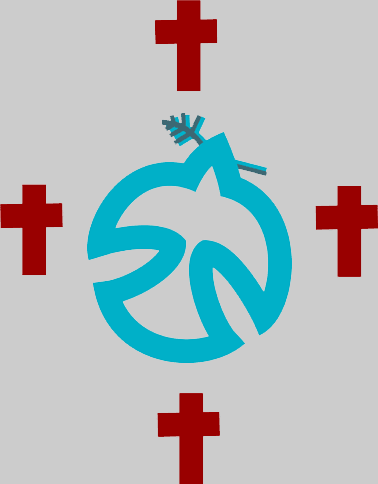
This was a day of tragedy – three children of Anne and Jackie Maguire (Joanne aged 8, John 2 and a half and Andrew 6 weeks) were killed after IRA fugitive Danny Lennon was shot dead at the wheel of his car by soldiers. Within a week, Betty Williams, who lived nearby and rallied a call against violence, Mairead Corrigan (later Maguire) the sister of Anne Maguire who made a plea for peace, and Ciaran McKeown a journalist and nonviolent activist, would form the movement known as Peace People. Consequently the tragedy was converted into a positive force and one that endures to this day, assisting peaceful activities worldwide.
The following description of events on and after 10 August 1976 is given by Ciaran McKeown:
In the week following the terrible events and four deaths of that sunny afternoon, there were widespread protests of various sizes across Northern Ireland, most of the kind of helpless spontaneous expression which I had often previously witnessed. On this occasion I was determined to harness the energy of the anguish and revulsion and on the evening of the children's funeral, August 13, Betty Williams and Mairead Corrigan and I met and discussed forming a "real" peace movement.
Mairead and I had separately met Betty Williams on August 12, all three of us met on August 13, and on August 17 we formally agreed, after a very serious conversation, to form The Peace People, and I wrote the Declaration of the Peace People that afternoon.
From day one The Peace People was a focused movement as opposed to a large number of spontaneous protests of the nine-day wonder variety. I drew up a programme of rallies stretching into December and reaching throughout the British Isles, rather than risk that week's emotion being overwhelmed by the next atrocity.
Prior to the formal constitution of the organisation in 1977 (to carry on the work of the marching/mobilising phase through local peace groups, each having the right to send delegates and vote for an Executive committee), the three of us acted in concert as co-founding leaders, with myself as director and Betty and Mairead doing most of the fronting.
Betty came to the fore after protesting women came to her door (she lived about 600 metres from the scene of the tragedy) asking her to sign a petition against the violence. Betty rang a local newspaper and was quoted with her name -- a rare enough thing -- and put out her telephone number for others to ring her -- much rarer again.
Mairead, as the children's aunt, had accompanied her brother-in-law to the mortuary to see the children, and made a most moving televised plea for peace.
I covered the event for my newspaper, and was doing a television programme about the events on the evening of the 13th, when I met the two of them together.
We each brought very different gifts and experience to the task and for most of the next 12 months we were able to act as "one" with an almost telepathic trust. Mairead has a natural uplifting and inspiring charisma allied to steely determination. Betty was a tremendously forceful and crowd-pleasing platform performer, a great asset.
The rate of violence, as measured by fatalities, fell by 70% over the following year, never to resume its appalling previous levels; and dialoguing groups sprang up all over Northern Ireland, beginning to weave what Martin Luther King might have called "the beloved community" out of a society fractured murderously along sectarian lines. Northern Ireland, having plunged horrifically into a downward spiral of pointless slaughter, began the slow upward spiral towards tolerance and stability. It still has a long way to go for real, dynamic "organic peace". There is a serious danger -- as always with ethnic conflicts -- that people will be more than happy to settle for the absence of serious violence, and ignore the fact that the sectarian/tribal dynamics are still there, not far from the surface. We are "managing" the conflict: we have not resolved it.
See: http://www.peacepeople.com/
|
12 March 2009 call to wear purple for peace
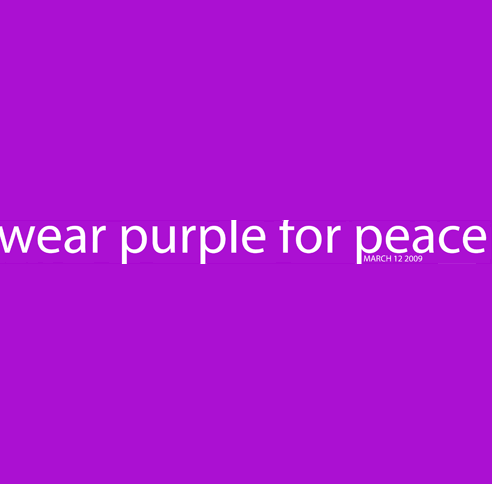
Following the killing of two soldiers (Mark Quinsey and Patrick Azimkar) waiting for a pizza delivery and a policeman (Constable Stephen Carroll) two days later, church leaders from all the main denominations called for the wearing of purple when attending St Patrick's day services (Lá ’le Pádraig or Lá Fhéile Pádraig). This moment perhaps represents a watershed in Irish history as the killings were widely condemned all over Ireland. There was a distinct sense in which people were appalled at killings occurring when 'the cause' was no longer a motivating factor. The every day person in Ireland has had enough. The multi-denominational call is also symbolic of a new Ireland, more focused on peace and democracy.
A contrasting tone was given by the international news media, particularly television, where there was a stronger focus on 'Ireland's fragile peace', rather than on reporting a community becoming united across several kinds of boundaries against the killings.
The following is how the call was reported in the Belfast Telegraph:
Protestant and Catholic church leaders urged the people of Northern Ireland today to send out a united message that peace is the only way forward.
Asking everyone to wear purple ribbons in protest at the recent murders, the four main denominations in the region called on congregations to pray together this weekend for an end to violence for good.
Roman Catholic, Church of Ireland, Presbyterian and Methodist leaders have penned a joint letter to their respective clergy asking them to hold special services this Sunday. The Evangelical Alliance has also backed the call.
Roman Catholic Primate Cardinal Sean Brady; Methodist President Rev Aian Ferguson; Archbishop Alan Harper, the Church of Ireland Primate and Presbyterian Moderator Rev Donald Patton met to discuss the killings in Belfast today.
President of the Irish Council of Churches Rev Tony Davison and National Director of Evangelical Alliance NI Rev Stephen Cave also attended the meeting at Presbyterian Church House.
"We have all been shocked and hurt by the tragic events of the last few days, with the murders of two young soldiers and a policeman - Sapper Mark Quinsey and Sapper Patrick Azimkar, at Massereene, and Constable Stephen Carroll in Craigavon," they said in the pastoral letter.
"Across the community people have been united in anger, sympathy and revulsion, but underlying the raw emotions has been a firm determination not to go back to what we all thought had been left behind.
"We offer our sincere sympathy to the families, friends and colleagues of those who have been killed. We also assure those who have been injured of our prayers and continuing concern."
In the text, the leaders commended local politicians for their leadership in the past few days and gave their full support to the police in their ongoing efforts to find the killers.
"As Church Leaders, and in discussion with others, we are very aware that people want to do more and send a clear unambiguous message that we are one community united against anyone who wants to return to threat and violence rather than democracy and peace as a way forward," they continued.
"We are therefore asking all our Churches to create opportunities for our people to send out a strong message of hope and determination to move forward together.
"It is particularly appropriate this Sunday, the closest to St Patrick's Day, that we offer special prayers for our land and people.
"Each Church and community will naturally find a different way of doing this - some in the context of their normal services; some by creating special times and space for people to come together; some communities joining together with neighbours from other traditions. We are simply encouraging everyone to do something."
They added: "We are also suggesting that, as a practical sign of our revulsion towards violence and our determination as one community to speak with one voice on this issue, people wear a purple ribbon or other item of purple clothing.
"Purple is associated with Lenten reflection and is offered as a strong outward symbol of people's commitment to working together for good."
Source: Belfast Telegraph
|
| |
|



